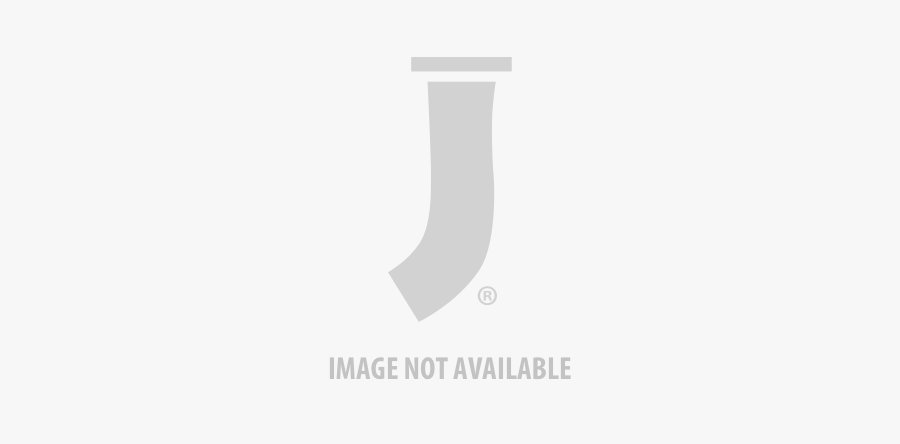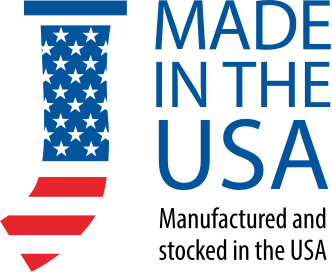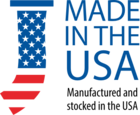
If you are a habitual reader of the Jessup Manufacturing blog page, then you are likely familiar with the concept of fabric coating, and why this type of service is important for your fabrics. What you might not know is that several fabric coating processes exist. The following will explain some of the fabric coating processes you can choose to use when you need to coat your fabrics.
Knife Coating – also known as floating knife – or Direct Coating: When Knife Coating, the liquid coating is applied to the fabric while being facilitated at tension under a floating knife blade. The thickness of the coating is determined by the distance between the fabric and the knife blade. The blade can be manipulated and angled, while consisting of different profiles that affects coverage. The liquid coating must be viscous enough to prevent it from soaking through the fabric in order for this process to be effective. Once this is complete, the coating is then dried or cured. The knife coating technique is very successful when used for filament yarns, because the staple fibers in spun yarns could protrude on the surface, consequently creating an uneven finish. The potential for protrusion is dependent on the thickness of the applied coating. For knife coating to become most successful, the weave structure must be extremely tight, and the fabric capable of being held taught.
 Direct Roll Coating: Direct roll coating involves the process of rolling coating liquid onto the fabric with a roller that has been suspended in the coating solution. Most often, a particular type of blade is positioned close to the roller to protect from an overabundance of coating solution application.
Pad-Dry-Cure Coating: This brand of coating is also simply referred to as Padding. This fabric coating technique, which is regarded as a textile finishing technique, can also be used to add a variety of coatings. Even so, Pad-Dry-Cure Coating most often refers to a fiber coating used for the application of both micro and nano materials, or even chemical compositions. The fabric is submerged in the coating solution. Excess liquid solution is then squeezed out in heated rollers, which directly dictates the pick-up percentage. After completion of the previously stated process, the fabric is then dried and cured.
Calendar Coating: Calendar coating involves the fabric passing through a set of heated rollers to singe off any surface fibers, and afterwards will successfully add luster and smoothness to the fabric. Calendar coating is similar in principle to previously mentioned fabric coating processes, as the fabric passes through heated rollers. However, with this process, the coating is applied simultaneously to both sides of the fabric, with the thickness of the coating determined by the width of the nip between the rollers. If a thinner coating is more preferable, additional rollers should be used.
Hot Melt Extrusion Coating: Hot melt extrusion coating is applied in the same manner as the Calendar Coating process, with the coating melted by granules fed to heated rollers, which then adhere the coating to the fabric. Hot Melt Extrusion Coating is used to produce unsupported films, and these produced films are added directly to the fabric. The uses for this kind of coating process are mainly for Thermoplastic Polymers, such as Polyurethane, Polyolefin, and PVC.
Foam Finishing Coating: Foam finishing was developed as a more environmentally friendly version of the pad-dry-cure coating system, as the chemical coating solution applied requires less product concerning weight, but equates to a high surface area. Foam Finishing Coating also ensures less wetting takes place, which will obviously require less drying. Furthermore, this coating process reduces waste pertaining to residual liquor. Foam Finishing Coating is useful when coating heavy fabrics, such as carpets, and can be used to effectively coat only one side of a fabric material.
 If you are a habitual reader of the Jessup Manufacturing blog page, then you are likely familiar with the concept of fabric coating, and why this type of service is important for your fabrics. What you might not know is that several fabric coating processes exist. The following will explain some of the fabric coating processes you can choose to use when you need to coat your fabrics.
Knife Coating – also known as floating knife – or Direct Coating: When Knife Coating, the liquid coating is applied to the fabric while being facilitated at tension under a floating knife blade. The thickness of the coating is determined by the distance between the fabric and the knife blade. The blade can be manipulated and angled, while consisting of different profiles that affects coverage. The liquid coating must be viscous enough to prevent it from soaking through the fabric in order for this process to be effective. Once this is complete, the coating is then dried or cured. The knife coating technique is very successful when used for filament yarns, because the staple fibers in spun yarns could protrude on the surface, consequently creating an uneven finish. The potential for protrusion is dependent on the thickness of the applied coating. For knife coating to become most successful, the weave structure must be extremely tight, and the fabric capable of being held taught.
 Direct Roll Coating: Direct roll coating involves the process of rolling coating liquid onto the fabric with a roller that has been suspended in the coating solution. Most often, a particular type of blade is positioned close to the roller to protect from an overabundance of coating solution application.
Pad-Dry-Cure Coating: This brand of coating is also simply referred to as Padding. This fabric coating technique, which is regarded as a textile finishing technique, can also be used to add a variety of coatings. Even so, Pad-Dry-Cure Coating most often refers to a fiber coating used for the application of both micro and nano materials, or even chemical compositions. The fabric is submerged in the coating solution. Excess liquid solution is then squeezed out in heated rollers, which directly dictates the pick-up percentage. After completion of the previously stated process, the fabric is then dried and cured.
Calendar Coating: Calendar coating involves the fabric passing through a set of heated rollers to singe off any surface fibers, and afterwards will successfully add luster and smoothness to the fabric. Calendar coating is similar in principle to previously mentioned fabric coating processes, as the fabric passes through heated rollers. However, with this process, the coating is applied simultaneously to both sides of the fabric, with the thickness of the coating determined by the width of the nip between the rollers. If a thinner coating is more preferable, additional rollers should be used.
Hot Melt Extrusion Coating: Hot melt extrusion coating is applied in the same manner as the Calendar Coating process, with the coating melted by granules fed to heated rollers, which then adhere the coating to the fabric. Hot Melt Extrusion Coating is used to produce unsupported films, and these produced films are added directly to the fabric. The uses for this kind of coating process are mainly for Thermoplastic Polymers, such as Polyurethane, Polyolefin, and PVC.
Foam Finishing Coating: Foam finishing was developed as a more environmentally friendly version of the pad-dry-cure coating system, as the chemical coating solution applied requires less product concerning weight, but equates to a high surface area. Foam Finishing Coating also ensures less wetting takes place, which will obviously require less drying. Furthermore, this coating process reduces waste pertaining to residual liquor. Foam Finishing Coating is useful when coating heavy fabrics, such as carpets, and can be used to effectively coat only one side of a fabric material.
If you are a habitual reader of the Jessup Manufacturing blog page, then you are likely familiar with the concept of fabric coating, and why this type of service is important for your fabrics. What you might not know is that several fabric coating processes exist. The following will explain some of the fabric coating processes you can choose to use when you need to coat your fabrics.
Knife Coating – also known as floating knife – or Direct Coating: When Knife Coating, the liquid coating is applied to the fabric while being facilitated at tension under a floating knife blade. The thickness of the coating is determined by the distance between the fabric and the knife blade. The blade can be manipulated and angled, while consisting of different profiles that affects coverage. The liquid coating must be viscous enough to prevent it from soaking through the fabric in order for this process to be effective. Once this is complete, the coating is then dried or cured. The knife coating technique is very successful when used for filament yarns, because the staple fibers in spun yarns could protrude on the surface, consequently creating an uneven finish. The potential for protrusion is dependent on the thickness of the applied coating. For knife coating to become most successful, the weave structure must be extremely tight, and the fabric capable of being held taught.
 Direct Roll Coating: Direct roll coating involves the process of rolling coating liquid onto the fabric with a roller that has been suspended in the coating solution. Most often, a particular type of blade is positioned close to the roller to protect from an overabundance of coating solution application.
Pad-Dry-Cure Coating: This brand of coating is also simply referred to as Padding. This fabric coating technique, which is regarded as a textile finishing technique, can also be used to add a variety of coatings. Even so, Pad-Dry-Cure Coating most often refers to a fiber coating used for the application of both micro and nano materials, or even chemical compositions. The fabric is submerged in the coating solution. Excess liquid solution is then squeezed out in heated rollers, which directly dictates the pick-up percentage. After completion of the previously stated process, the fabric is then dried and cured.
Calendar Coating: Calendar coating involves the fabric passing through a set of heated rollers to singe off any surface fibers, and afterwards will successfully add luster and smoothness to the fabric. Calendar coating is similar in principle to previously mentioned fabric coating processes, as the fabric passes through heated rollers. However, with this process, the coating is applied simultaneously to both sides of the fabric, with the thickness of the coating determined by the width of the nip between the rollers. If a thinner coating is more preferable, additional rollers should be used.
Hot Melt Extrusion Coating: Hot melt extrusion coating is applied in the same manner as the Calendar Coating process, with the coating melted by granules fed to heated rollers, which then adhere the coating to the fabric. Hot Melt Extrusion Coating is used to produce unsupported films, and these produced films are added directly to the fabric. The uses for this kind of coating process are mainly for Thermoplastic Polymers, such as Polyurethane, Polyolefin, and PVC.
Foam Finishing Coating: Foam finishing was developed as a more environmentally friendly version of the pad-dry-cure coating system, as the chemical coating solution applied requires less product concerning weight, but equates to a high surface area. Foam Finishing Coating also ensures less wetting takes place, which will obviously require less drying. Furthermore, this coating process reduces waste pertaining to residual liquor. Foam Finishing Coating is useful when coating heavy fabrics, such as carpets, and can be used to effectively coat only one side of a fabric material.


















